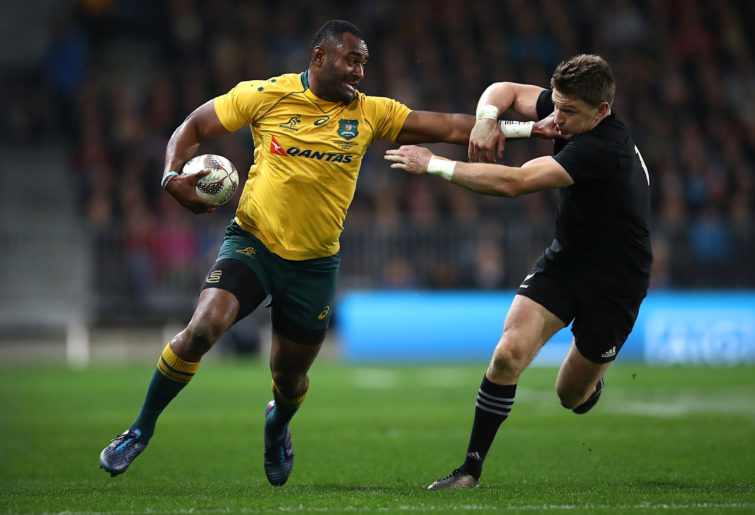AP Cronje
new author
Roar Rookie
Opinion
There is a school of thought in international relations that posits that the Mediterranean Sea has since Alexander’s Macedonian Empire been the crucible of geopolitics.
Thousands of tribes, factions and nation-states have fought, traded or allied for political hegemony of this region. It is perhaps striking how comparably international rugby unions behave in competing for ascendance on the global stage.
The geopolitics of rugby is a similar quilt of interwoven alliances, squabbles and betrayals; a riddle wrapped in a mystery inside an enigma.
In the sport of rugby union, the control of the game has always been split between hemispheres, but it is ‘the north’ that has long retained financial and political dominance. European decision-makers staff the most important positions in World Rugby and European club and international competitions generate the most revenue.
The countries that comprise the Six Nations (England, Wales, Scotland, Ireland, France and Italy) have an unwritten but strict alliance between them. In rugby’s political realm they function as the most powerful voting bloc and command enough influence to chart the fate of the sport.
In political terms, they represent rugby’s preeminent superpower.
The alliance has not been without its grumblings of course: in 2018 the Irish Rugby Union (IRU) and French Rugby Federation (FFR) directly competed to host the 2023 Rugby World Cup. As international relations theory would predict, the actor with the greater political capital and financial muscle (France) came out on top – much to the ire of the Irish who reasonably suspected foul play.
It was nevertheless a statement to the rest of the rugby world that France is primus inter pares.
Perhaps in protest to this perceived slight, the Irish (and Welsh) earlier this year threatened to withdraw support for Englishman Bill Beaumont and Frenchman Bernard Laporte during their election campaign for the Chairman and Vice-Chairman positions in World Rugby.
It would have represented an unprecedented act of dissent, a betrayal of the tacit alliance.
Ultimately on the eve of the election, the Irish and Welsh fell back in line; leaving the rugby world to speculate what might have been said or promised over the clandestine phone calls and hushed conversations that preceded the vote. The alliance endures, but loyalty has its price.
Thousands of miles to the south there exists another coalition, one that has neither the resources nor the political leverage of the Six Nations and yet consistently outperforms its European counterparts. Between them New Zealand, South Africa and Australia form a Triple Entente that has won all but one Rugby World Cup and featured in every final.
The Southern Hemisphere’s ‘Big Three’ each have an over-50% win record against every member of the Six Nations; with the exception of Australia vs England where both sides have won an equal number of tests. The All Blacks’ and Springboks’ lowest win percentages are 79% and 60% respectively (both against England).
The north may run the global game, but on the field it’s the men from the south that have ascendency.
In the last decade these three heavyweights have been joined by Argentina, a junior member of the new coalition but an ambitious international actor that has demanded a seat at the table.
Together they are now SANZAAR (an acronym of the nations’ names) – a not insubstantial voting bloc in their own right, wielding enough political and financial power to administer the game in the Southern Hemisphere free from interference.
The SANZAAR coalition has, however, been significantly more fractious than the Six Nations alliance. Straddling three vast oceans with thousands of miles between them, geography has proven a long-standing obstacle for SANZAAR. The sheer distance between the countries has made it a logistical nightmare to organise and broadcast rugby whilst still appeasing all stakeholders.

(Phil Walter/Getty Images)
SANZAAR’s flagship club competition – Super Rugby – is a convoluted behemoth of an endeavour operating across 13 time-zones and three ‘conferences’. Its rapid expansion from 14 to 15 to 18 teams sought to incorporate sides from developing rugby regions.
It succeeded only in diluting the quality of the competition and ostracising a fan base that could not understand its new labyrinthine configuration.
In spite of its internal challenges, the SANZAAR coalition has historically behaved with political cohesion, supporting each other on the international stage wherever possible. The coalition jointly cast its votes for Argentine Agustin Pichot in his unsuccessful campaign against Beaumont earlier this year and previously supported South Africa’s failed 2023 World Cup bid.
For decades the north-south dichotomy has existed largely unperturbed. Two hemispheres, both alike in dignity, administering their own affairs and maintaining a degree of separation from the other.
In rugby, however, as in life, change happens slowly then all at once. In the past year, the geopolitics of rugby has experienced its biggest shake-up since the game turned professional. It would have taken an almighty exogenous shock to upset the established order and COVID-19 has provided exactly that.
The disruption to the 2020 rugby season has poleaxed rugby’s finances from grassroots to international level. In England, the Rugby Football Union (RFU) has announced sweeping pay cuts and staff redundancies in an extensive cost-saving effort; a trend that mirrors many of its Six Nations compatriots.
Wales and England have both scrapped their Rugby Sevens programmes citing them as unsustainable. Nevertheless, the RFU still predicts a £6M shortfall for this year’s autumn internationals alone owing to reduced stadium capacity.
In the south, the situation is no better. The Australian Rugby Union (ARU) and New Zealand Rugby Union (NZRU) have both required bailouts in order to sure up their finances. The forecast in South Africa looks similarly bleak.
If the successful World Cup in Japan last year marked rugby’s high-water mark financially, then it is roughly analogous to the stock market boom of 1929 before the Great Depression of the ‘30s.
Drawing further on this metaphor, the depression of the 1930s was a palpable demonstration that economic changes (particularly of the negative variety) have vast political ramifications – so too it is proving to be in the rugby world. The fractures between the SANZAAR nations bourn out of years of compromise and unwilling accommodation are widening by the day under the burden of financial pressure.
In the last few months, New Zealand made the unilateral decision to expel South Africa and Argentina from the upcoming season of Super Rugby. A decision that is ostensibly temporary but likely to mark in real-terms the end of those countries’ involvement in the competition for good.

(Photo by Steve Haag/Gallo Images/Getty Images)
New Zealand has instead opted to pursue a closer relationship with its Oceanic neighbours in a Trans-Tasman competition involving Australia’s club sides and a proposed Pacific Nations team.
South Africa for their part have been courting closer relationships with Europe and their expelled Super Rugby teams are set to join an expanded Pro14 competition (a tournament that once defined itself as ‘Celtic’). Moreover, rugby’s éminence grise, Bernard Laporte, has suggested that South Africa are at an ‘advanced stage’ of discussions to join an ‘Eight Nations’ tournament later this year in preference to SANZAAR’s Rugby Championship.
If the Springboks do play in Europe this autumn it would represent a hammer blow for an already strained relationship between the SANZAAR members. SANZAAR’s CEO Andy Marinos has issued statements on an almost bi-weekly basis reaffirming each country’s commitment to the coalition but these now increasingly appear the desperate rhetoric of an organisation on the wane.
As South Africa continues to look north it could effect a reconfiguration of rugby’s geopolitical landscape. Gone would be the longstanding north-south divide with control now instead stratified along a longitudinal axis between Europe and South Africa.
New Zealand and Australia may yet have been too hasty to cast off South Africa’s Super Rugby sides; if South Africa continues to align its interests with the Six Nations (bringing with them their substantial broadcast revenue and political weight) it may soon be New Zealand and Australia that find themselves increasingly sequestered, penniless and without a voice.